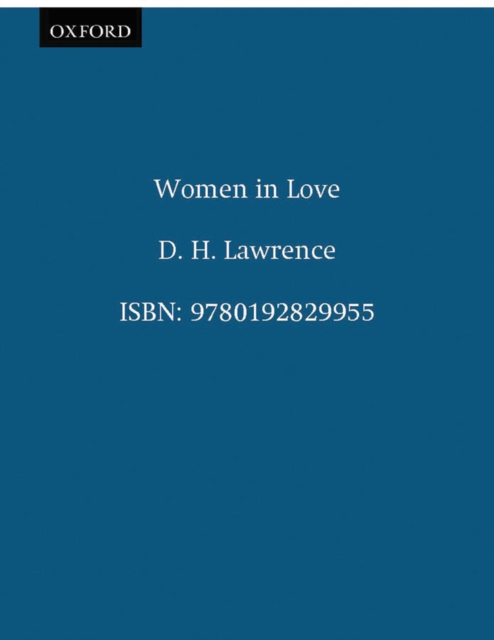Women in Love Synopsis
`New eyes were opened in her soul. She saw a strange creature from another world, in him. It was as if she were enchanted, and everything were metamorphosed.'In Women in Love (1920), Ursula and Gudrun Brangwen, who first appeared in Lawrence's earlier novel, The Rainbow, take centre stage as Lawrence explores their growth and development in their relationships with two powerful men, Rupert Birkin and his friend Gerald Crich. A novel of regeneration and dark, destructive human passion, Women in Love reflects the impact on Lawrence of the First World War in the potential both for annihilation and salvation of the self. Quintessentially modernist, Women is Love is one of Lawrence's most extraordinary, innovative and unsettling works. ABOUT THE SERIES: For over 100 years Oxford World's Classics has made available the widest range of literature from around the globe. Each affordable volume reflects Oxford's commitment to scholarship, providing the most accurate text plus a wealth of other valuable features, including expert introductions by leading authorities, helpful notes to clarify the text, up-to-date bibliographies for further study, and much more.
About This Edition
D. H. Lawrence Press Reviews
His masterpiece. . . . An astonishing work that moves on several levels. . . . Lawrence compels us to admit that we live less finely than we should, whatever we are.
-The New York Review of Books
About D. H. Lawrence
David Herbert Lawrence was born into a miner’s family in
Eastwood, Nottinghamshire, in 1885, the fourth of five children. He
attended Beauvale Board School and Nottingham High School, and trained
as an elementary schoolteacher at Nottingham University College. He
taught in Croydon from 1908. His first novel, The White Peacock,
was published in 1911, just a few weeks after the death of his mother to
whom he had been extraordinarily close. His career as a schoolteacher
was ended by serious illness at the end of 1911.
In 1912 Lawrence
went to Germany with Frieda Weekley, the German wife of the Professor
of Modern Languages at the University College of Nottingham. They were
married on their return to England in 1914. Lawrence had published Sons and Lovers in 1913; but The Rainbow, completed in 1915, was suppressed, and for three years he could not find a publisher for Women in Love, completed in 1917.
After
the war, Lawrence lived abroad, and sought a more fulfilling mode of
life than he had so far experienced. With Frieda, he lived in Sicily,
Sri Lanka, Australia, New Mexico and Mexico. They returned to Europe in
1925. His last novel, Lady Chatterley’s Lover, was published in
1928 but was banned in England and America. In 1930 he died in Vence, in
the south of France, at the age of forty-four.
Lawrence’s life
may have been short, but he lived it intensely. He also produced an
amazing body of work; novels, stories, poems, plays, essays, travel
books, translations, paintings and letters (over five thousand of which
survive). After his death Frieda wrote that, ‘What he had seen and felt
and known he gave in his writing to his fellow men, the splendour of
living, the hope of more and more life … a heroic and immeasureable
gift.’
More About D. H. Lawrence
